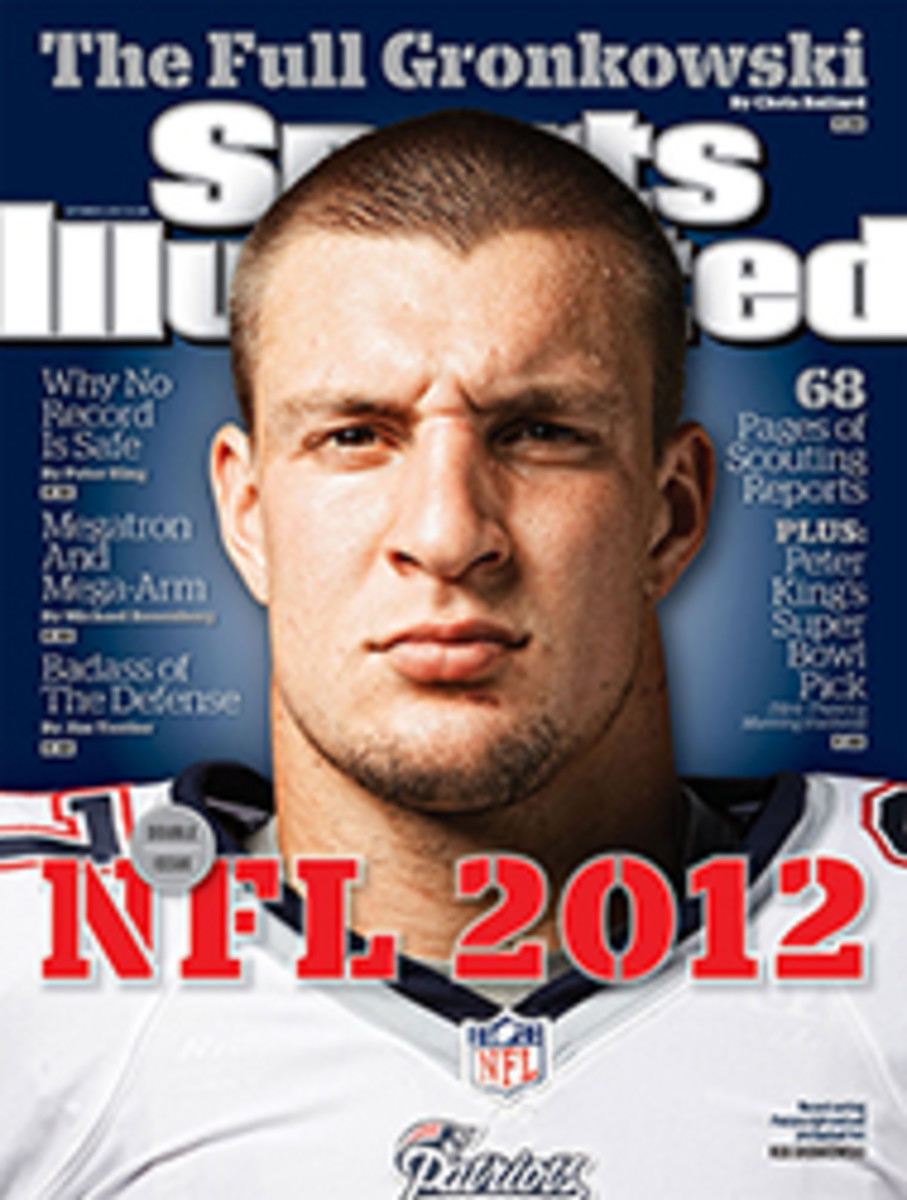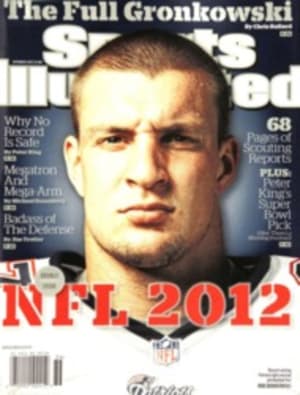
2 SEATTLE: Seahawks
TO DEMONSTRATE the physical impact that a big cornerback can have in the NFL, 6'3", 195-pound Seahawks starter Richard Sherman steps in front of a visitor, bends his knees and raises his hands to chest level. He may be in a defensive stance, but he is taking this demonstration in a decidedly offensive direction, jamming his arms into the visitor's chest.
"Receivers are not used to lining up against guys like us," he says, pointing to fellow Seattle starter Brandon Browner, who's even larger at 6'4" and 221, and who gave his own hands-on demonstration in early August when he mauled newly signed receiver Terrell Owens on Owens's first day of training camp. (Owens was later cut.)
"Most people don't play our style. Others press, but they don't stay with it. They back off and read. We come up, and we don't move off. We're going to put our hands on you. [Most teams] spend a whole game adjusting to our style."
If the Seahawks are going to take the next step following 7--9 finishes in each of Pete Carroll's first two seasons, this kind of aggressive defending will figure prominently.
There is nothing subtle about the Seahawks' secondary. Last season Seattle was the only team with two starting cornerbacks 6'2" or taller—and their strong safety, Kam Chancellor, is 6'3", 232 pounds. (Free safety Earl Thomas is the smallest of the group, at 5'10" and 202, but his 4.4 speed and catlike reflexes more than make up for it.)
Speak to Carroll about the size of his secondary, and he smiles. The 37-year coaching veteran started his career as a graduate assistant at Pacific in 1974, and he has had his eyes open for big corners going back to his first gig as a defensive coordinator, at N.C. State in '80.
"When you're a bump-and-run guy," says Carroll of his preferred coverage style, "you learn to appreciate guys who have length. You never want to go without it."
For Browner and Sherman, that size comes at the expense of a certain degree of athleticism shared by smaller corners, and at times their physical play gets them into trouble. They tied for the league lead with three illegal-contact infractions apiece in 2011, and Browner was second with six pass-interference calls.
But for Carroll, whose defense will have to tangle with Arizona's Larry Fitzgerald twice this year, having the size to match up against big receivers outweighs the occasional cons.
A cornerback's best friend is a pass rush, and the Seahawks, who tied for 11th in the NFL with 20 sacks over the final eight games last year, upgraded theirs with the addition of first-round pick Bruce Irvin, a quick, long-armed edge rusher out of West Virginia who can force a quarterback into a hurried release. With Sherman and Browner disrupting routes at the line, and with the ball coming out quicker, Carroll envisions plenty of incompletions (Seattle was No. 7 in the league in 2011, with 89 passes defended) and nearly as many opportunities for plays on the ball (the Seahawks were No. 4, with 22 interceptions).
Offensively, Seattle signed former Packers backup Matt Flynn, who has only two career starts (the eye-opener: a 480-yard, six-touchdown effort last January that rewrote the Packers' record books), and expected that he would stave off competition from rookie Russell Wilson. Wilson had something to say about the decision; in the preseason he threw five touchdowns and ran for another in three games.
Though the Seahawks love Flynn's decision-making, accuracy and anticipation, he lacks the arm strength and athleticism of Wilson, who was named the starter for the opener.
Marshawn Lynch is the undisputed bell cow of the running game, but in 2011 he averaged just 43.8 yards rushing in his first six games as Seattle struggled to a 2--4 start. He gained more than 100 in six of the next nine, however, and it showed in the standings, with the Seahawks winning five of those.
If Lynch can get off to a faster start; if Flynn turns out to be what Seahawks brass expected when they signed him to a three-year, $19.5 million deal in March; and if the defense plays to its obvious potential, Seattle could make a run at a double-digit wins total.
Projected Lineup
WITH 2011 STATS
OFFENSE 2011 RANK: 28
[originallink:10885796:1009553]
(R) Rookie—College stats
TTD Total touchdowns
OFFENSIVE LINEMEN
SACKS Sacks allowed
HOLD Holding penalties
FALSE False starts
SCHEDULE
2011 Record: 7--9
SEPTEMBER
9 at Arizona
16 Dallas
24 Green Bay (Mon)
30 at St. Louis
OCTOBER
7 at Carolina
14 New England
18 at San Francisco (Thu)
28 at Detroit
NOVEMBER
4 Minnesota
11 New York Jets
18 BYE
25 at Miami
DECEMBER
2 at Chicago
9 Arizona
16 at Buffalo*
23 San Francisco
30 St. Louis
* in Toronto
SPOTLIGHT
Sidney Rice
Wide receiver
Seattle's big free-agent acquisition in 2011 was limited to just nine games, 32 catches and two touchdowns because of shoulder and concussion issues. He had surgery on both shoulders in the off-season and in August practiced for the first time in nine months, albeit wearing the hands-off red jersey.
If the Seahawks are to have an established downfield threat—something they lacked last year, as evidenced by their six touchdown catches of 20-plus yards, 14 fewer than NFL leader Green Bay—then Rice needs to step up. Golden Tate isn't the man for the job (career average: 10.9 yards per catch). The team signed veterans Braylon Edwards and Terrell Owens over the summer, and Pete Carroll envisioned both of them making the squad. But reality struck when Owens was released, likely leaving a roster spot for Edwards, who's younger and had fared better against press coverage in practice.
Even if he makes the team, Edwards will defer to Rice, whose track record (more than 15 yards per catch in each of the past three seasons) and size (at 6'4", he's six inches taller than Tate) make him the deep man Seattle lacked last season.
NUMBERS
58
Passes last season on which Seahawks quarterbacks targeted Golden Tate, who had zero drops. No other wide receiver had even 50 targets without a drop.
26.4
Percentage of the Seahawks' defensive sacks, hits and hurries that were attributed to end Chris Clemons.
21
Combined interceptions (six) and pass deflections (15) accumulated by cornerback Brandon Browner, the most in the league.
PHOTO
JEFF LEWIS/ICON SMI (SHERMAN)
One half of the NFL's tallest cornerback tandem, Sherman will be counted on to bully foes into turnovers.
PHOTO
JONATHAN FERREY/GETTY IMAGES (RICE)

